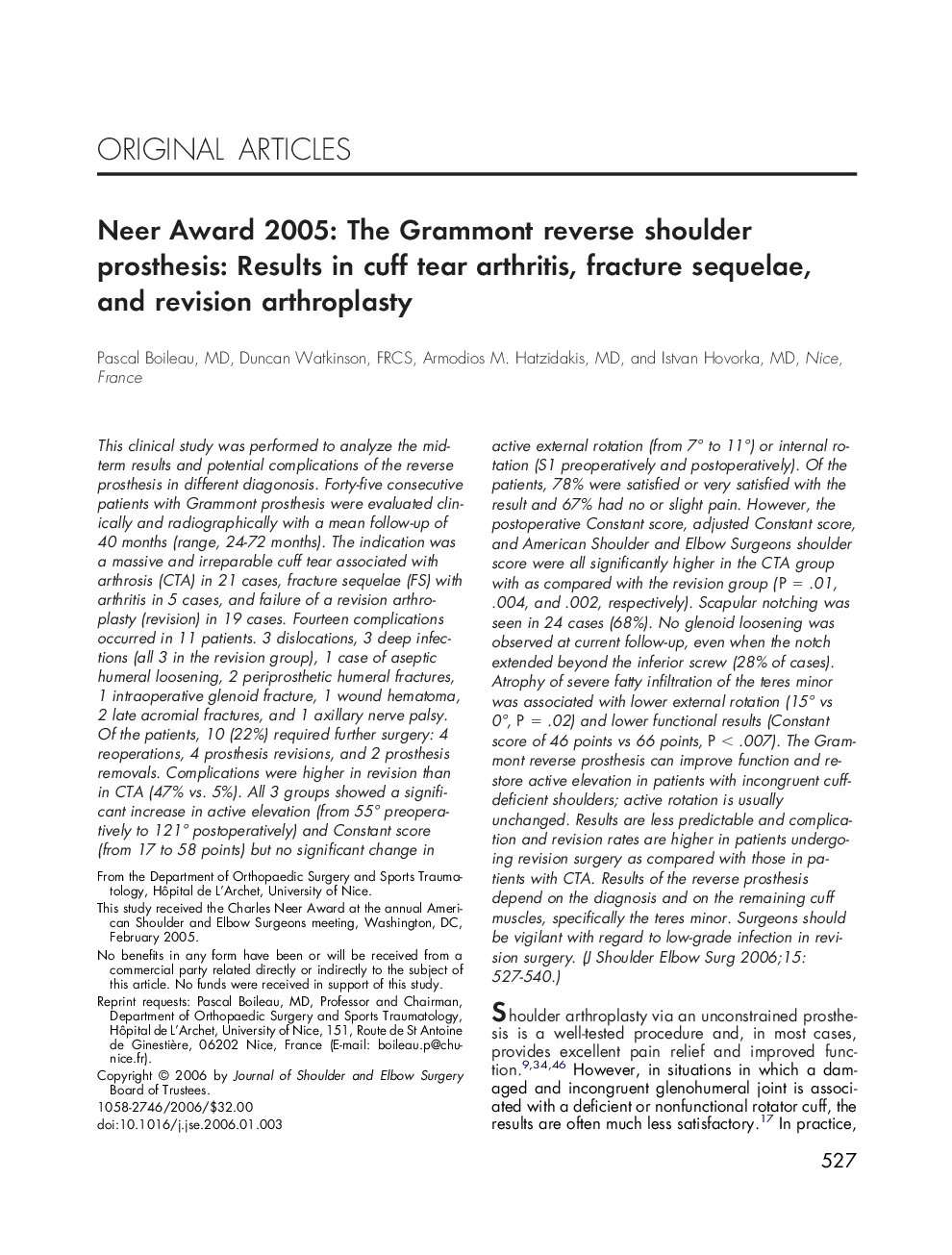| کد مقاله | کد نشریه | سال انتشار | مقاله انگلیسی | نسخه تمام متن |
|---|---|---|---|---|
| 4076103 | 1267061 | 2006 | 14 صفحه PDF | دانلود رایگان |

This clinical study was performed to analyze the midterm results and potential complications of the reverse prosthesis in different diagonosis. Forty-five consecutive patients with Grammont prosthesis were evaluated clinically and radiographically with a mean follow-up of 40 months (range, 24-72 months). The indication was a massive and irreparable cuff tear associated with arthrosis (CTA) in 21 cases, fracture sequelae (FS) with arthritis in 5 cases, and failure of a revision arthroplasty (revision) in 19 cases. Fourteen complications occurred in 11 patients. 3 dislocations, 3 deep infections (all 3 in the revision group), 1 case of aseptic humeral loosening, 2 periprosthetic humeral fractures, 1 intraoperative glenoid fracture, 1 wound hematoma, 2 late acromial fractures, and 1 axillary nerve palsy. Of the patients, 10 (22%) required further surgery: 4 reoperations, 4 prosthesis revisions, and 2 prosthesis removals. Complications were higher in revision than in CTA (47% vs. 5%). All 3 groups showed a significant increase in active elevation (from 55° preoperatively to 121° postoperatively) and Constant score (from 17 to 58 points) but no significant change in active external rotation (from 7° to 11°) or internal rotation (S1 preoperatively and postoperatively). Of the patients, 78% were satisfied or very satisfied with the result and 67% had no or slight pain. However, the postoperative Constant score, adjusted Constant score, and American Shoulder and Elbow Surgeons shoulder score were all significantly higher in the CTA group with as compared with the revision group (P = .01, .004, and .002, respectively). Scapular notching was seen in 24 cases (68%). No glenoid loosening was observed at current follow-up, even when the notch extended beyond the inferior screw (28% of cases). Atrophy of severe fatty infiltration of the teres minor was associated with lower external rotation (15° vs 0°, P = .02) and lower functional results (Constant score of 46 points vs 66 points, P < .007). The Grammont reverse prosthesis can improve function and restore active elevation in patients with incongruent cuff-deficient shoulders; active rotation is usually unchanged. Results are less predictable and complication and revision rates are higher in patients undergoing revision surgery as compared with those in patients with CTA. Results of the reverse prosthesis depend on the diagnosis and on the remaining cuff muscles, specifically the teres minor. Surgeons should be vigilant with regard to low-grade infection in revision surgery.
Journal: Journal of Shoulder and Elbow Surgery - Volume 15, Issue 5, September–October 2006, Pages 527–540